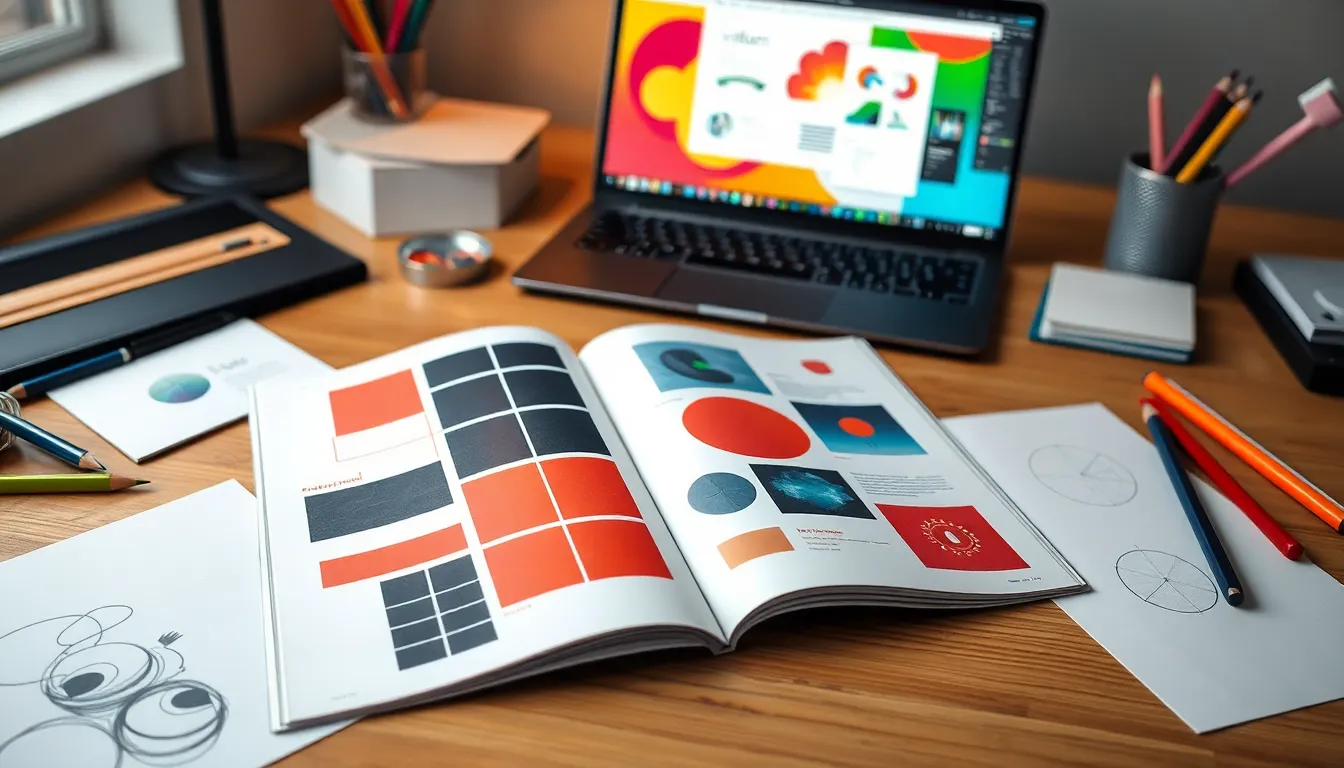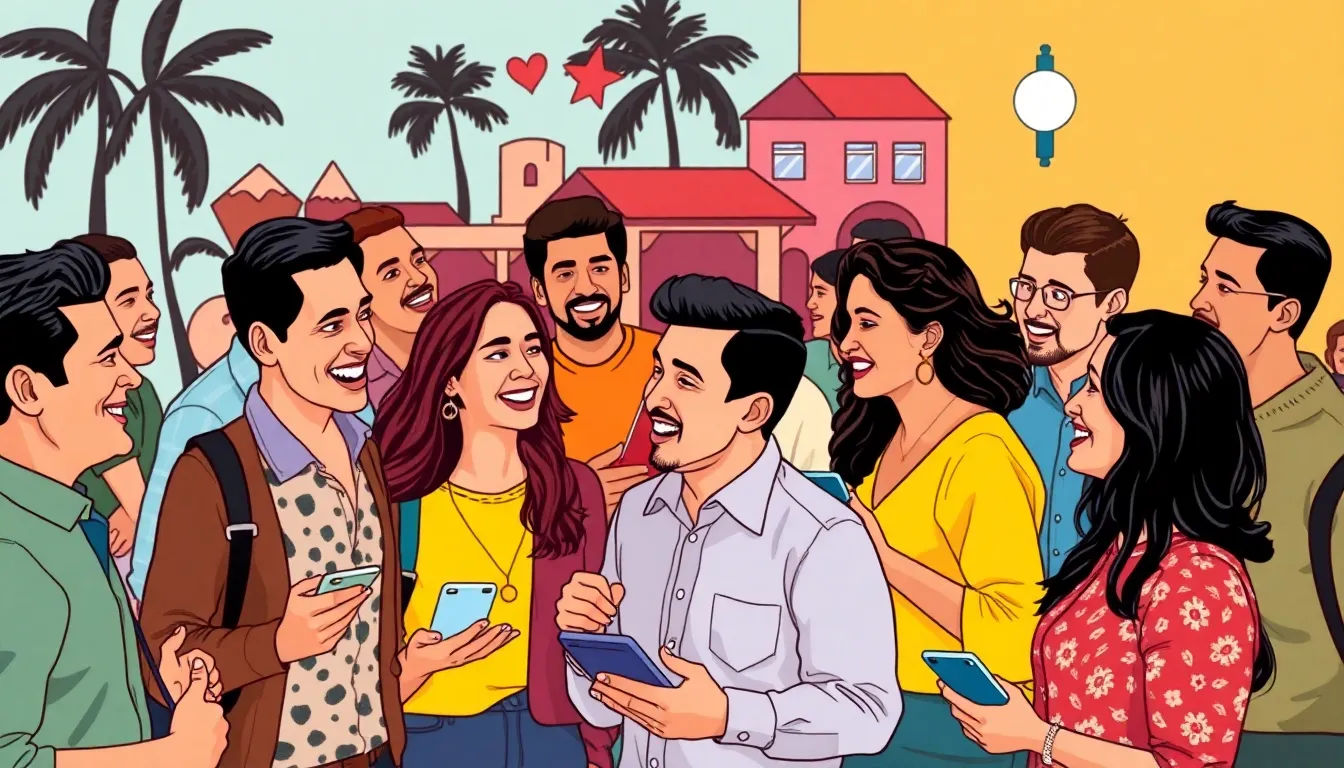In the world of magazines, first impressions matter. A creative magazine layout can be the difference between a reader flipping through pages or tossing it aside. Think of it as a first date—if the layout doesn’t catch the eye, it’s just not going to work out. With the right mix of colors, fonts, and images, a magazine layout can transform ordinary content into an extraordinary experience.
But it’s not just about looking good. A well-designed layout guides the reader’s journey, making them feel like they’re gliding through a beautifully curated gallery. Whether it’s bold graphics or playful typography, every element plays a role in storytelling. So, let’s dive into the art of creative magazine layouts and discover how to make pages not just appealing but downright irresistible. After all, who wouldn’t want their magazine to be the belle of the newsstand ball?
Table of Contents
ToggleUnderstanding Creative Magazine Layouts
Creative magazine layouts play a crucial role in engaging readers and enhancing their overall experience. An effective layout combines elements that draw attention and make information accessible.
Definition and Importance
Creative magazine layouts refer to the innovative arrangement of visual and textual elements within a publication. Such layouts capture readers’ interest and create a lasting impression. They transform a magazine into a visually stimulating experience, akin to experiencing art. Engaging layouts often lead to increased readership and improved brand loyalty. A well-designed magazine can communicate its message effectively, keeping readers engrossed.
Key Elements of Design
Key elements of design include color, typography, imagery, and whitespace. Color influences moods and perceptions, guiding readers through content. Typography establishes hierarchy and readability, allowing information to flow seamlessly. Imagery complements text by adding visual interest, while whitespace enhances clarity. Each element works together to create balance and harmony, ensuring a cohesive layout. Focusing on these components helps designers create memorable and effective magazine designs.
Types of Creative Magazine Layouts

Creative magazine layouts manifest in various forms. They cater to distinct design philosophies and aesthetic goals.
Grids and Columns
Grids and columns provide a structured foundation for magazine layouts. Designers use them to organize content, making it easier for readers to navigate. Utilizing a consistent grid can establish a clear visual hierarchy, guiding readers through articles and images. Multiple columns offer versatility for text formatting and can enhance readability. Magazines often play with grid sizes to create dynamic effects, ensuring that each page remains engaging.
Asymmetrical Designs
Asymmetrical designs break traditional layout conventions, creating a sense of tension and interest. This style emphasizes visual balance through the strategic placement of elements, rather than strict symmetry. Unexpected placements lead to a unique reading experience, captivating readers’ attention. Designers can juxtapose large images with small text blocks to create a lively composition. Implementing asymmetry encourages experimentation, allowing for a fresh approach that appeals to diverse audiences.
Minimalist Approaches
Minimalist approaches focus on simplicity and clarity in magazine layouts. This style highlights essential elements like typography and imagery, eliminating distractions. A limited color palette often defines minimalist designs, fostering cohesion and harmony. Designers can create ample whitespace to enhance readability and draw attention to key features. By prioritizing essential content, minimalist layouts offer an elegant solution while maintaining reader engagement.
Tools and Software for Designing Layouts
Designers utilize various tools and software to create innovative magazine layouts. These resources enhance creativity and streamline the design process.
Popular Design Tools
Adobe InDesign ranks as a leading choice for magazine designers. This software offers powerful layout features, allowing users to manage text and images seamlessly. Canva serves as another excellent option, particularly for those seeking simplicity and templates. Affinity Publisher provides a cost-effective alternative with robust design capabilities. Sketch appeals to web-focused designers, making it versatile for both print and digital layouts. Finally, Figma facilitates collaboration among teams, ensuring everyone can contribute in real-time.
Tips for Using Design Software
When using design software, prioritizing organization proves essential. Structuring layers and folders keeps projects manageable. Utilizing templates can save time and ensure consistency across issues. Experimenting with color palettes helps maintain brand identity and attracts readers. Limiting font choices avoids visual clutter and enhances readability. Additionally, seeking feedback during the design process fosters improvement and innovation. Lastly, staying updated with software features maximizes efficiency and creativity.
Best Practices in Creating Engaging Layouts
Creative magazine layouts thrive on the principle of engaging readers through effective design. Focusing on elements like visual hierarchy and typography helps create memorable experiences.
Visual Hierarchy
Visual hierarchy establishes the order in which readers process information. Designers use different font sizes and weights to guide the viewer’s attention. Large headlines attract first glances, while smaller body text supports detailed reading. Consistent spacing between elements also creates a structured flow, making it easier to navigate. Color contrasts emphasize key areas, enhancing the overall appeal. Effective visual hierarchy invites seamless interaction, ensuring readers absorb content without feeling overwhelmed.
Typography Choices
Typography choices play a crucial role in defining a magazine’s character. Mixing serif and sans-serif fonts can create a dynamic visual experience. Choosing complementary typefaces adds interest while maintaining readability. Moreover, font size should vary based on content significance; larger fonts signal importance. Limiting the number of typefaces fosters cohesion across pages. Readability remains paramount, so selecting legible fonts ensures comfortable reading. Thoughtful typography enriches the layout, contributing to an engaging reader experience.
Real-World Examples of Creative Magazine Layouts
Creative magazine layouts stand out through innovative design and compelling features. Notable magazines inspire designers by pushing boundaries and redefining conventions.
Notable Magazine Features
Popular magazines incorporate eye-catching cover designs and intricate layouts. Vogue excels with high-fashion visuals and artistic typography that captivate readers instantly. National Geographic showcases stunning photography combined with clean text, enhancing storytelling. Wired embraces modern design with bold colors and open spaces, effectively guiding the reader’s journey. These features create distinctive identities and enhance the overall reader experience.
Case Studies of Successful Layouts
Case studies from leading publications demonstrate effective layout strategies. The New Yorker employs a minimalist approach alongside powerful imagery, fostering an intimate connection with its audience. Elle magazine effectively utilizes asymmetrical layouts that draw attention to captivating fashion spreads. Dazed leverages innovative grid structures to create a dynamic visual narrative while presenting diverse content. Each of these magazines showcases unique layouts that increase reader engagement and retain interest.
Creative magazine layouts play a pivotal role in shaping reader experiences and fostering engagement. By skillfully combining design elements like color, typography, and imagery, designers can craft layouts that not only attract attention but also guide readers through a curated visual journey.
Exploring various styles and approaches helps magazines stand out in a competitive market. Whether opting for structured grids or embracing minimalism, the key lies in understanding how these choices affect readability and aesthetic appeal.
Through the use of modern design tools and adherence to best practices, designers can continually push the boundaries of creativity. Ultimately, a well-executed magazine layout can leave a lasting impression, encouraging readers to return for more.




